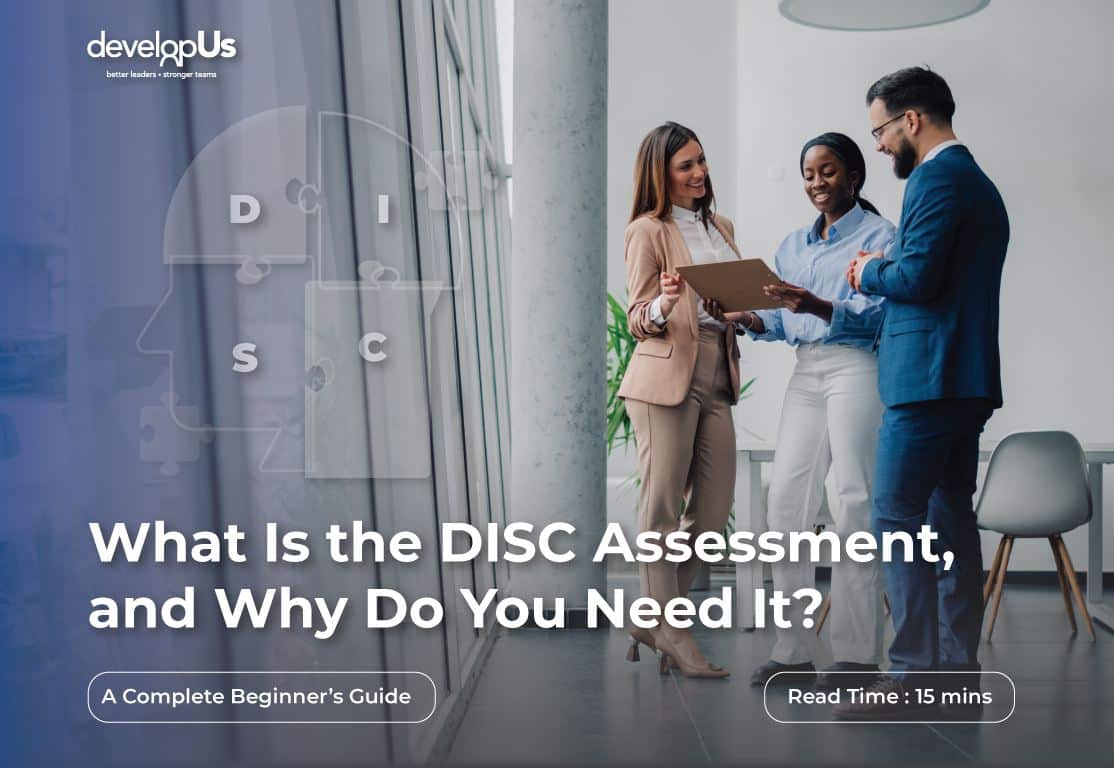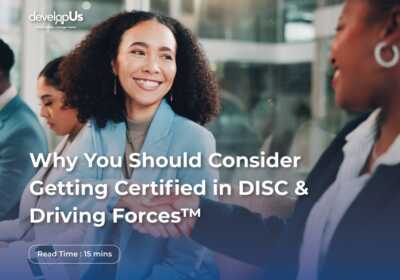What Is the DISC Assessment, and Why Do You Need It? A Complete Beginner’s Guide

If you’ve ever found yourself thinking, “Why does Sarah love to jump right into decisions while Tyrell wants five meetings before taking action?” — you’re not alone. People approach the world in wonderfully different ways, and understanding those differences can be the key to working smarter, leading better, innovating faster, and even reducing workplace stress.
That’s where the DISC comes in. DISC is one of the most widely used behavioral assessments in business today, helping teams improve communication, collaboration, and self-awareness. Whether you’re a CEO leading hundreds or just trying to figure out why your colleague sends 3 a.m. emails with 27 exclamation points, DISC can offer valuable insights.
Let’s break it down — no psychology degree required.
The Origins: A Quick Trip Back in Time
The DISC model isn’t a passing HR trend; it dates back nearly a century. It was developed by Dr. William Moulton Marston, a psychologist (and, fun fact, the creator of Wonder Woman). In the 1920s, Marston proposed that people’s behaviors stem from how they perceive their environment and how they choose to respond to it — whether they see it as friendly or hostile, and whether they feel in control or not.
He categorized behavioral tendencies into four main dimensions:
- Dominance (D) – How we respond to challenges
- Influence (I) – How we interact with people
- Steadiness (S) – How we respond to pace and consistency
- Conscientiousness (C) – How we approach rules and procedures
While Marston never designed an actual “test,” later psychologists and business practitioners built assessments around his theory. The result is today’s DISC — a framework that has become a cornerstone in leadership development, hiring, team building, and personal growth.
Tired of One-and-Done Leadership Training?
Discover a year-long journey that builds habits, not just skills.
The Four DISC Styles: A Playful Look at What Makes Each Tick
Think of the four DISC styles as different “operating systems” for how people get things done. None are better than others; they just have different strengths (and, yes, quirks).
Dominance (D) – The Driver
These are the go-getters, the action-takers, the “let’s cut to the chase” people. D-types thrive on results and challenges. They make decisions quickly, love to win, and can sometimes come across as blunt. If you’ve ever had a boss who starts every meeting with “What’s the bottom line?” — you’ve met a D.
- Strengths: Decisive, direct, ambitious, competitive
- Watch-outs: Can be impatient, overly forceful, or dismissive of details
- Motto: “Get it done — now.”
Influence (I) – The Social Butterfly
I-styles are your natural networkers — enthusiastic, charming, and persuasive. They light up a room (and probably talk to everyone in it). They thrive on connection, recognition, and excitement. The flip side? They can get so caught up in relationships that they sometimes skip the boring follow-up details.
- Strengths: Inspiring, optimistic, outgoing, creative
- Watch-outs: Can be disorganized or overly talkative
- Motto: “Let’s make it fun!”
Steadiness (S) – The Supporter
S-styles are the glue that holds teams together. They value stability, collaboration, and trust. These folks are dependable, empathetic, and loyal — the ones who remember everyone’s birthday and keep projects running smoothly. But change can rattle them, and they may avoid conflict to keep the peace.
- Strengths: Patient, reliable, calm, team-oriented
- Watch-outs: May resist change or hesitate to speak up
- Motto: “Let’s make sure everyone’s okay.”
Compliance (C) – The Analyzer
C-styles are all about accuracy and quality. They love rules, systems, and data. They’re the ones checking spelling, proofreading slides, and asking, “What’s our process for that?” Their commitment to excellence is unmatched — but sometimes, their perfectionism can slow things down.
- Strengths: Precise, analytical, responsible, thorough
- Watch-outs: Can be critical or overly cautious
- Motto: “If it’s worth doing, it’s worth doing right.”
Why DISC Works: The Power of Self-Awareness
The magic of DISC isn’t in the assessment itself — it’s in the conversation that follows. By understanding your own behavioral style, you gain insight into what energizes you, what drains you, and how you tend to interact with others.
Even more valuable? You start to see others through a new lens. The next time your D-style boss seems abrupt, or your S-style teammate needs more time to adjust to a change, you’ll know it’s not personal — it’s behavioral preference.
This awareness builds empathy and adaptability, two hallmarks of emotionally intelligent leadership. Instead of demanding others change to match your style, DISC helps you flex your approach to get the best from everyone.
Using DISC at Work: Real-World Applications
DISC isn’t just for personality quizzes or team offsites (though it does make those icebreakers a lot more interesting). It’s used across industries for:
- Leadership development: Helping managers tailor their communication and motivation strategies to different team members.
- Team building: Reducing friction and improving collaboration by revealing how people prefer to give and receive information, and by creating a common language.
- Sales and customer service: Understanding client behavior to adapt your approach and build stronger relationships.
- Conflict resolution: Shifting conversations from emotion to understanding by identifying differing communication needs.
- Recruiting and onboarding: Matching candidates to roles and teams that suit their natural strengths (with caution to avoid misuse — no hiring assessment can, or should, be used for more than one third of a hiring decision, and must be reliable, valid and proven to avoid disparate impact).
When organizations use DISC effectively, they create cultures where differences are celebrated, not criticized. Teams become more cohesive, leaders become more self-aware, and employees feel seen and understood.
A Word of Caution: It’s a Tool, Not a Label
While DISC provides helpful insights, it’s not a magic crystal ball — or a box to put people in. Everyone is a blend of all four styles, with one or two being more dominant. Your DISC profile describes your behavioral tendencies, not your intelligence, skills, or values.
So while your report might say you’re high in “I” and low in “C,” that doesn’t mean you’re doomed to lose every spreadsheet battle. It simply highlights where you’ll feel most natural and where you may need to stretch.
Used correctly, DISC becomes a language of understanding — not judgment.
Bringing DISC to Life
Here’s a quick experiment:
- The next time you’re in a meeting, try to guess everyone’s DISC style.
- The person jumping in with bold ideas? Probably a D.
- The one keeping spirits high and conversations lively? Likely an I.
- The steady note-taker who asks if everyone’s aligned? An S in action.
- The one questioning every data point on the slide? You guessed it — a C.
Once you start noticing patterns, communication feels easier. You’ll know when to slow down, when to speed up, and when to send that detailed follow-up email versus a quick voice note.
That’s the real value of DISC — not changing who you are, but understanding how to connect better with everyone around you.
Final Thoughts: From Insight to Impact
At its heart, the DISC Personality Test is about self-awareness, communication, and connection. It reminds us that people see the world through different lenses — and that’s a good thing.
Whether you’re leading a team, coaching clients, or just trying to survive your next group project, DISC gives you the tools to meet others where they are. It helps you harness diversity of thought, reduce misunderstandings, and create environments where everyone can thrive.
So, go ahead — take the assessment, discover your style, and have a little fun with it. You might just learn that your “annoying coworker” isn’t difficult after all — they’re just a different letter in the alphabet of human behavior.
Once you’ve taken the assessment for yourself, meet with a certified professional to review the results, and consider bringing this experience to your entire, team. Our facilitators can come to you, or, you can be certified by our team of experts to deliver these assessments, debriefs, and team session yourself.
Related Posts

Why You Should Consider Getting Certified in DISC & Driving Forces™
If you’ve ever taken a DISC assessment and thought, “Wow, this explains so much!” —…

Why Catalyst Leadership Program Outperforms One-and-Done Programs
How many leadership programs have you paid for that made absolutely no difference in your…

How People Spend Training Dollars: Aligning Investments to How People Learn
In today’s rapidly evolving workplace, continuous learning and development are critical to employee performance, engagement,…

Leave a Reply